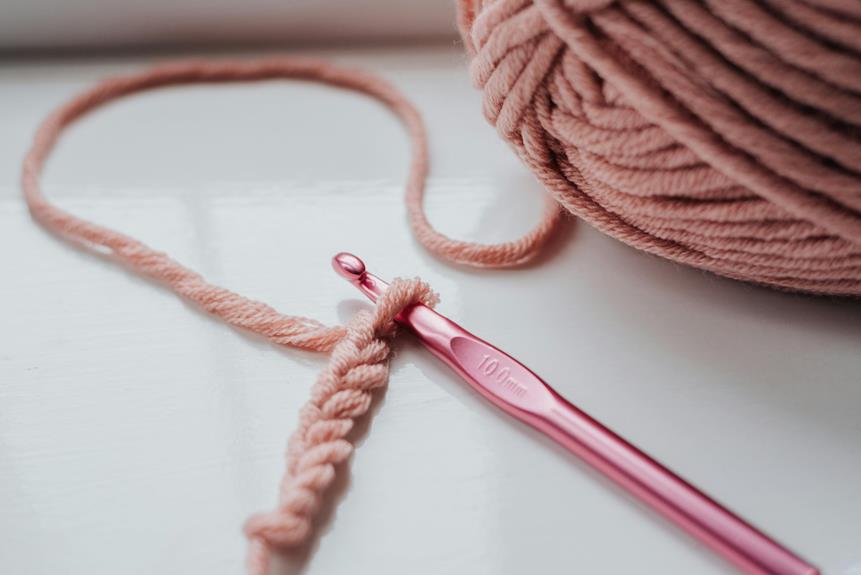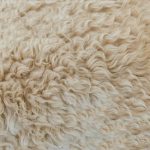When you think about microfleece, you might envision its soft texture and warmth, but have you considered its potential when blended with other fibers? By combining microfleece with materials like polyester, cotton, or spandex, manufacturers can enhance its durability, breathability, and stretch. This opens up a range of possibilities in design and functionality across various applications. But what exactly are the implications of such blends, and how do they affect performance and longevity? The answers might surprise you.
Table of Contents
Understanding Microfleece Properties
Microfleece is a lightweight fabric known for its exceptional warmth and softness, making it a popular choice for outdoor clothing and blankets. Its insulating properties help retain body heat, even in chilly weather, which is why you'll find it in many jackets and activewear.
When you wear microfleece, you'll appreciate how it wicks moisture away from your skin, keeping you dry and comfortable during physical activities.
Another advantage of microfleece is its breathability. This means you won't feel stuffy or overheated, even when you're working up a sweat.
The fabric's softness enhances comfort, allowing layers to slide on and off easily without bunching up or irritating your skin. You may also notice it won't snag or pill as easily as some other textiles, making it a durable option for everyday wear.
Microfleece is also easy to care for. You can toss it in the washing machine without worrying much about shrinking or losing its shape.
Plus, it dries quickly, meaning you can go from washing to wearing in no time.
With its impressive array of properties, microfleece is a go-to choice for your outdoor and cozy needs.
Common Fiber Blends
Commonly, microfleece fabrics are blended with other fibers like polyester or spandex to enhance their performance and versatility for various applications. By incorporating polyester, the fabric becomes more durable, maintaining its shape and resisting wear and tear. This blend is excellent for activewear, where you need lightweight yet resilient materials.
When blended with spandex, microfleece gains superior stretchability, making it perfect for fitted garments that require comfort without compromising flexibility. You'll find this combination often in athletic apparel, offering both warmth and ease of movement.
Another popular blend is with cotton, which adds breathability and a softer touch. This combination is often used in everyday clothing and loungewear, providing a cozy feel while still being easy to maintain.
Lastly, mixing microfleece with other synthetic fibers like nylon can improve moisture-wicking properties. This blend is particularly beneficial for outdoor gear, keeping you dry and comfortable during physical activities.
These common fiber blends not only expand the functionality of microfleece but also cater to specific needs in performance, comfort, and style. Choosing the right blend can make all the difference in your fabric experience.
Benefits of Blending Microfleece
Blending microfleece with other fibers offers enhanced durability, stretch, and moisture-wicking capabilities, making it ideal for a variety of clothing applications. When you combine microfleece with materials like spandex or polyester, you get a fabric that moves with you, providing comfort during physical activities. This stretch not only improves fit but also helps maintain the garment's shape, so you won't have to worry about sagging or losing form.
Additionally, the moisture-wicking properties of microfleece help draw sweat away from your skin, keeping you dry and comfortable whether you're hiking, running, or just lounging around. Blending microfleece with natural fibers, like cotton, can also enhance breathability, making it suitable for all-season wear.
Moreover, these blends can be softer, providing a cozy feel against your skin, which is a significant draw for loungewear. By choosing blended microfleece, you're also benefiting from easier care and maintenance, as many blends are more resistant to pilling and fading.
Innovations in Fabric Technology
Recent advancements in fabric technology are revolutionizing how we experience clothing by enhancing performance, comfort, and sustainability. You'll find innovative materials that breathe better, regulate temperature, and wick moisture away from the skin, keeping you dry and comfortable throughout your activities.
Manufacturers are now blending synthetic fibers like microfleece with natural materials such as cotton or bamboo, creating textiles that combine the best of both worlds. You'll notice increased durability, softness, and eco-friendliness in these blends. Techniques like 3D knitting are also emerging, allowing fabric to be tailored for specific uses, minimizing waste and promoting sustainable production methods.
Moreover, advancements in dyeing processes mean you can expect vibrant colors without harming the environment. Innovations like waterless dyeing and the use of non-toxic chemicals reduce the ecological footprint of fabric production.
Smart textiles are another exciting area; fabrics integrated with technology can monitor your body temperature, track heart rates, or even charge your devices on the go. As these innovations continue to evolve, you'll be able to enjoy clothing that not only looks great but also meets your performance and environmental needs.
Applications of Blended Fabrics
You'll find that blended fabrics, combining synthetic and natural fibers, are being applied in various industries, enhancing functionality and comfort in everyday wear. These fabrics create a perfect balance of durability and softness, making them ideal for a range of applications.
| Industry | Application |
|---|---|
| Fashion | Casual clothing, activewear |
| Outdoor Gear | Jackets, tents, and sleeping bags |
| Home Textiles | Couch covers, curtains, and bedsheets |
| Health Care | Scrubs, protective wear |
Blended fabrics improve moisture-wicking properties, making them great for sportswear. In outdoor gear, fabrics that resist water while keeping you warm are vital. You'll appreciate how blended textiles in home furnishings provide durability without sacrificing style. Additionally, the medical sector benefits significantly, as blended fabrics can offer protection and comfort for healthcare workers.
Frequently Asked Questions
Can Microfleece Be Blended With Natural Fibers Like Cotton or Wool?
You can blend microfleece with natural fibers like cotton or wool. This combination often results in a softer, warmer fabric, enhancing comfort while maintaining breathability, making it suitable for various clothing and home textile applications.
What Is the Ideal Percentage of Microfleece in a Blend?
For optimal comfort and warmth, aim for a blend with about 60% microfleece and 40% other fibers. This ratio balances breathability and softness while retaining the insulating properties you appreciate in microfleece.
Does Blending Microfleece Affect Its Water-Resistance Properties?
Blending microfleece can affect its water-resistance properties. When combined with other fibers, you might find changes in how well it repels moisture, depending on the specific materials and their characteristics in the blend.
Are There Any Downsides to Blending Microfleece With Other Materials?
Blending microfleece with other materials can reduce its softness and breathability. You might also find it affects the fabric's overall durability, as different fibers may not hold up equally well under wear and washing.
How Does Blending Microfleece Impact the Environmental Sustainability of Fabrics?
Blending microfleece can affect environmental sustainability by introducing non-biodegradable materials or complicating recycling processes. You should consider eco-friendly alternatives that maintain comfort while reducing ecological impact, ensuring your choices contribute positively to sustainability efforts.
- How Does Ring Spun Cotton Affect Garment Fit and Shape Retention? - August 13, 2024
- What Are the Challenges in Producing Ring Spun Cotton? - August 13, 2024
- Is Ring Spun Cotton Suitable for Plus-Size Clothing? - August 13, 2024







